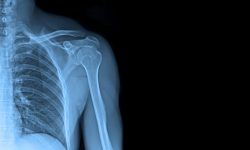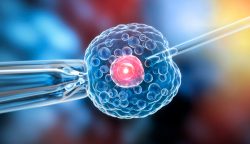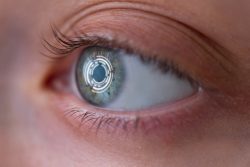Walking Fast Can Slow Down Aging
 Want to add 16 years to your life? A new study from the University of Leicester says it’s as simple as picking up the pace. Turns out, walking briskly might be the secret to aging gracefully.
Want to add 16 years to your life? A new study from the University of Leicester says it’s as simple as picking up the pace. Turns out, walking briskly might be the secret to aging gracefully.
Remarkably, engaging in brisk walking throughout one’s life contributes to elongated telomeres, the essential safeguarding “caps” situated at the extremities of our chromosomes. Comparable to the function of the plastic tips on shoelaces, telomeres ensure DNA stability without carrying any genetic data themselves. In order to estimate an individual’s biological age scientists examine the length of these protective caps, with longer telomeres indicating a younger biological profile.
A recent study encompassing 400,000 UK Biobank participants discovered a fascinating correlation. Those participants with a swifter walking tempo appeared biologically 16 years younger by midlife. Remarkably, it seems brisk walking alone, independent of other physical pursuits, contributes to the extension of telomeres – a key component in our biological age determination.
A fascinating cellular investigation reveals that each cellular division causes a progressive shortening of telomeres, leading to a halt in cell division when they become critically short. The accumulation of senescent (elderly and dying) cells contributes to age-related diseases and fragility, although the exact relationship with telomere length remains hazy. By harnessing genetic data and wearable activity trackers, this groundbreaking research solidifies the connection between brisk walking and increased telomere length. This emphasizes the power of habitual physical activity intensity in promoting cellular health.
For the first time, innovative research has emerged linking walking speed to genetic data correlated with extended lifespans. This intriguing discovery builds upon earlier studies that revealed the multifaceted advantages of walking, encompassing physical, mental, and social aspects. Previous investigations into the connection between walking pace, physical activity, and telomere length have faced limitations due to inconsistent results and insufficient data quality. This groundbreaking study prompts further scientific exploration in the field of human longevity.
The intriguing implication that a slower walking pace might indicate a higher risk of chronic illness and poor aging showcases the potential role of activity intensity in optimizing health interventions. To enhance overall well-being, people with higher capabilities could increase the steps they take within a given time frame. Previous studies from Leicester researchers highlight that an engaging ten minutes of brisk walking daily could extend life expectancy by up to two decades compared to those with a more leisurely pace.
The researchers in this investigation observed that there was no connection between a leisurely walking speed and diminishing telomere length. Although past findings have demonstrated that a brisk ambulation pace strongly correlates with an individual’s health condition, evidence that this pace inherently leads to improved health was lacking. By analyzing genetic data, this study revealed that maintaining a faster walking tempo could indeed contribute to a relatively youthful biological age, as indicated by telomere measurements.
To view the original scientific study click below:
Investigation of a UK biobank cohort reveals causal associations of self-reported walking pace with telomere length



 The rapidly increasing preference for fermented products like kombucha and kefir suggest that there is more to the story than merely health-conscientious consumers. Many cultures around the world have historically relied on these foods, suggesting a deeper significance beyond their preservation capabilities. These foods have clearly resonated among modern populations as well. From the traditional Korean Kimchi to Middle Eastern yogurt, nations have been consuming these foodstuffs for centuries. Could it be more than simply a method of preservation? Could it be that fermentation offers much more than just nutrition?
The rapidly increasing preference for fermented products like kombucha and kefir suggest that there is more to the story than merely health-conscientious consumers. Many cultures around the world have historically relied on these foods, suggesting a deeper significance beyond their preservation capabilities. These foods have clearly resonated among modern populations as well. From the traditional Korean Kimchi to Middle Eastern yogurt, nations have been consuming these foodstuffs for centuries. Could it be more than simply a method of preservation? Could it be that fermentation offers much more than just nutrition? A cup of wild blueberries is more than a tasty treat. Researchers have discovered that adding blueberries to your diet can boost brain function and cardiovascular health. According to a new study, blueberries contain a powerful compound called anthocyanins that improve blood flow in both the brain and heart. These polyphenols have been linked to a range of health benefits, and are responsible for the brain-boosting effects of this sweet snack.
A cup of wild blueberries is more than a tasty treat. Researchers have discovered that adding blueberries to your diet can boost brain function and cardiovascular health. According to a new study, blueberries contain a powerful compound called anthocyanins that improve blood flow in both the brain and heart. These polyphenols have been linked to a range of health benefits, and are responsible for the brain-boosting effects of this sweet snack.  Defying conventional belief, epidemiology studies have frequently uncovered the “obesity paradox,” whereby excess body weight seemingly has marginal impact on mortality risk. Critics argue that such paradox arises from methodological limitations, specifically the usage of body-mass index (BMI) to assess obesity. When accounting for BMI’s inherent drawbacks, recent research unveils the absence of this paradox, underscoring that higher levels of body fat contribute to an increased likelihood of death.
Defying conventional belief, epidemiology studies have frequently uncovered the “obesity paradox,” whereby excess body weight seemingly has marginal impact on mortality risk. Critics argue that such paradox arises from methodological limitations, specifically the usage of body-mass index (BMI) to assess obesity. When accounting for BMI’s inherent drawbacks, recent research unveils the absence of this paradox, underscoring that higher levels of body fat contribute to an increased likelihood of death. Did you know that the delicious farm-raised salmon on your plate might be hiding a secret? Recent research on over two metric tons of salmon from North America, South America, and Europe revealed some surprising findings. Farm-raised salmon were found with significantly higher levels of PCBs and other toxins when compared to wild salmon. This discovery raises concerns about the potential health risks of indulging in your favorite fish dish.
Did you know that the delicious farm-raised salmon on your plate might be hiding a secret? Recent research on over two metric tons of salmon from North America, South America, and Europe revealed some surprising findings. Farm-raised salmon were found with significantly higher levels of PCBs and other toxins when compared to wild salmon. This discovery raises concerns about the potential health risks of indulging in your favorite fish dish. Scientists recently achieved a breakthrough in stem cell research with the successful transformation of stem cells into bone cells via specifically programmed materials. Using shape-memory polymers and dynamic scaffolds, researchers were able to make this discovery possible.
Scientists recently achieved a breakthrough in stem cell research with the successful transformation of stem cells into bone cells via specifically programmed materials. Using shape-memory polymers and dynamic scaffolds, researchers were able to make this discovery possible. Do you ever find yourself absent-mindedly crossing your legs while sitting down? It turns out that most people cross their right leg over their left, with some preferring the opposite or having no preference at all. But have you ever wondered if this common habit is actually bad for your health and posture?
Do you ever find yourself absent-mindedly crossing your legs while sitting down? It turns out that most people cross their right leg over their left, with some preferring the opposite or having no preference at all. But have you ever wondered if this common habit is actually bad for your health and posture? Researchers from The Univ. of Melbourne and the Australian Nat’l Univ. have made a major breakthrough that could revolutionize stem cell delivery. They’ve created a novel ‘hybrid’ hydrogel, which enables clinicians to transport healthy amounts of stem cells directly into the site of brain injuries in mice. This overcomes one of the biggest challenges surrounding this technology since its inception over thirty years ago.
Researchers from The Univ. of Melbourne and the Australian Nat’l Univ. have made a major breakthrough that could revolutionize stem cell delivery. They’ve created a novel ‘hybrid’ hydrogel, which enables clinicians to transport healthy amounts of stem cells directly into the site of brain injuries in mice. This overcomes one of the biggest challenges surrounding this technology since its inception over thirty years ago. Despite our tendency to indulge in high-sugar and high-fat foods, research suggests it may not be entirely our fault. A recent study revealed that consistently consuming sugary and fatty foods has the power to reprogram our brains to crave them even more. These delicious but unhealthy treats, like chips, cake and cookies, have a way of persuading our brains to subconsciously prefer them. Even after we stop eating them, our brains still yearn for them. In short, we have unknowingly become addicted to fatty and sugary treats. Our brains learn to associate these fatty and sugary foods with pleasure, causing us to crave them even when we’re not eating them.
Despite our tendency to indulge in high-sugar and high-fat foods, research suggests it may not be entirely our fault. A recent study revealed that consistently consuming sugary and fatty foods has the power to reprogram our brains to crave them even more. These delicious but unhealthy treats, like chips, cake and cookies, have a way of persuading our brains to subconsciously prefer them. Even after we stop eating them, our brains still yearn for them. In short, we have unknowingly become addicted to fatty and sugary treats. Our brains learn to associate these fatty and sugary foods with pleasure, causing us to crave them even when we’re not eating them. Fascinating research led by Buck Institute professor Pankaj Kapahi suggests that our eyes hold the key to understanding the aging process. By examining the blood vessel-rich tissue in the retina, known as the fundus, imaging technology can track human aging more accurately than other methods. This noninvasive and less expensive approach has even led to the development of a clock called eyeAge, which can pinpoint the genetic basis for aging.
Fascinating research led by Buck Institute professor Pankaj Kapahi suggests that our eyes hold the key to understanding the aging process. By examining the blood vessel-rich tissue in the retina, known as the fundus, imaging technology can track human aging more accurately than other methods. This noninvasive and less expensive approach has even led to the development of a clock called eyeAge, which can pinpoint the genetic basis for aging.